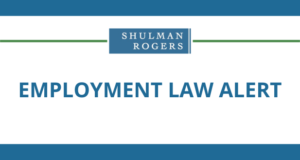May 6, 2025

Employment Law Alert: New DOL Guidance Hits Pause and Rewind on Independent Contractor Crackdown
|
The DOL recently signaled the return to a (slightly) more flexible test for independent contractor status. This area of law is far from settled- stay tuned as we anticipate further developments. The DOL’s latest rule related to classifying workers as employees or independent contractors under the Fair Labor Standards Act took effect on March 11, 2024 (“2024 Rule”). The 2024 Rule focused on the “economic realities” of the worker’s relationship with their employer. The 2024 Rule adopted a non-exhaustive, six-factor test with each of the factors receiving equal weight to evaluate the economic dependence of a worker on their employer. The factors are:
On May 1, 2025, the DOL Wage and Hour Division (“WHD”) issued a field assistance bulletin, explaining that it is reconsidering the 2024 Rule, including whether to rescind the regulation. Thus, the WHD will no longer apply the 2024 Rule’s analysis in FLSA investigations moving forward. Rather, WHD will enforce the FLSA in accordance with Fact Sheet #13 from July 2008, further informed by Opinion Letter FLSA 2025-2. The July 2008 test looks at the “total activity or situation which controls.” The factors examined include:
At first glance, while many of the factors appear substantially similar to the 2024 Rule, we anticipate the DOL is signaling its intention to revert to a more flexible, employer-friendly test. Notably, however, until further action is taken, the 2024 Rule remains in effect for purposes of private litigation. Additionally, employers should remain mindful of the federal and state law variances in how classification is construed. For example, California makes notable distinctions governing worker classification. Additionally, this DOL bulletin does not impact current worker classification analysis conducted by other federal agencies, such as pursuant to the Internal Revenue Code, the National Labor Relations Act or other federal laws. Please do not hesitate to reach out for assistance related to employee classification. |
MORE INFORMATIONThe contents of this Alert are for informational purposes only and do not constitute legal advice. If you have any questions about this Alert, please contact the Shulman Rogers attorney with whom you regularly work or a member of the Shulman Rogers Employment and Labor Law Group. To receive Employment Law Alerts and other timely news and information from Shulman Rogers, please click HERE to subscribe. |
Stay up to date with all the latest news and events.
